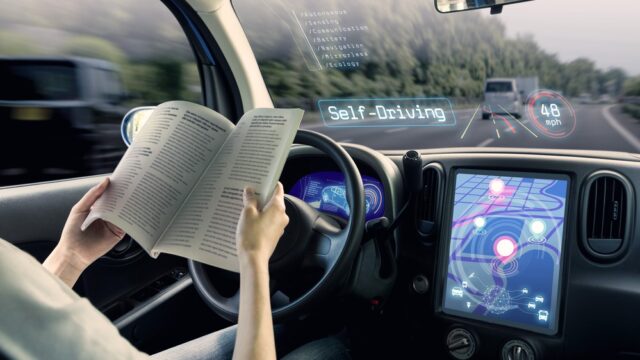
Automation is changing the way people live, from the products they use to the services they rely on. Technological advancements have resulted in a wave of innovation reshaping industries and improving daily experiences. Explore 5 game-changing innovations, learn how they work, and see what impact they have on society.
As automation technology continues to advance, it is becoming increasingly easier for people to simplify their daily routines and tasks. Among the key components that enable it is the electric actuator. This device provides efficient and reliable ways of automating mechanical movements in many industries, from manufacturing to healthcare. Furthermore, you can buy electric actuator sets anywhere in the world. Let’s take a look at five innovations that use automation to change people’s routines.
What Is the Importance of Automation in Daily Life?
Automation technology has been instrumental in simplifying daily routines and tasks, transforming people’s home and work routines. You can complete tasks with minimal effort and time if you use automation technology.
The importance of automation systems from its ability to simplify complex processes, reduce human error, and improve overall efficiency. One of the top reasons why automation is essential in daily life is that it saves time and effort.
It can complete tasks faster and more accurately than humans, thereby increasing productivity and freeing time for other activities. It also helps to lower costs by reducing labour expenses and minimizing waste in manufacturing processes.
Automated Routine: Top Five Innovations to Change Your Life
Embracing automation technology gives you more free time to devote to activities that are important to you. And here are the top innovations that will enable you to do so:
1. Self-Driving Cars
Self-driving cars are poised to revolutionize how people move around, offering a range of benefits, such as reducing traffic congestion and improving road safety. These cars use advanced sensors and algorithms to monitor their surroundings and navigate roads without human intervention. This technology can also transform the transportation industry, leading to new business models like ride-sharing services.
2. Personalized Healthcare
Automation has played an important role in transforming healthcare by enabling personalized treatments for patients. For example, medical devices, such as insulin pumps and pacemakers, can be programmed to deliver medications or electrical impulses.
Robotic surgical systems enable surgeons to perform complex surgeries with greater precision and minimal invasiveness. This technology has improved patient outcomes and reduced recovery times. Automation in healthcare has led to the development of electronic health records, making it easier for doctors to track patient histories and provide tailored treatments.
3. Smart Homes

Home automation is rapidly gaining momentum, with smart home appliances becoming increasingly popular. These appliances can be controlled remotely using a smartphone or voice assistant, allowing homeowners to manage their homes more efficiently. For example, smart thermostats can learn people’s schedules and temperature preferences, and adjust the heating or cooling.
Smart lighting systems can be programmed to turn on or off at specific times of the day or in response to voice commands. Similarly, smart security systems can be set up to send alerts and live video feeds directly to the homeowner’s phone, providing a sense of safety and control even when they are away.
4. Drones for Deliveries
Drones for deliveries have grown in popularity in recent years, particularly when it comes to delivery services. Drone delivery is an automated system that uses small, unmanned aerial vehicles to transport packages from one location to another.
The package is loaded onto a drone, which then flies autonomously to the destination, where it is dropped off. While delivery drones are still being tested and regulated in many parts of the world, they have enormous potential to transform the way goods are delivered, making them faster and more efficient than traditional methods.
5. Augmented Reality in e-Commerce

Augmented reality (AR) is a technology that overlays digital information on top of the real world. It has made waves in the e-Commerce industry by allowing customers to visualize products before making a purchase.
AR-enabled apps allow users to preview products on their smartphones and tablets. It includes imagining how furniture would look in their living room or how clothes would fit on their bodies.
Customers can make more informed decisions with AR and are less likely to return items due to unexpected differences from online descriptions. It improves the overall shopping experience by making it more engaging and interactive for customers. By implementing AR, e-Commerce businesses can differentiate themselves from competitors and attract tech-savvy consumers who value innovation.
The rapid advancement of automation technology has transformed people’s daily routines. Electric actuators are critical in enabling automation in a variety of industries, including self-driving cars, smart homes, robotics in healthcare, delivery drones, and industrial automation. These advancements have the potential to make people’s lives easier and more efficient, paving the way for a more automated future.
Conclusion
In conclusion, augmented reality has revolutionized the e-Commerce landscape by revolutionizing the way customers engage with products. By offering immersive and realistic previews, AR empowers consumers to make informed purchasing decisions, leading to increased customer satisfaction and decreased returns. The implementation of AR not only enhances the overall shopping experience but also helps businesses differentiate themselves from competitors and attract forward-thinking consumers. As AR continues to evolve, its potential impact on e-Commerce is boundless, opening up a world of possibilities for businesses and consumers alike.














